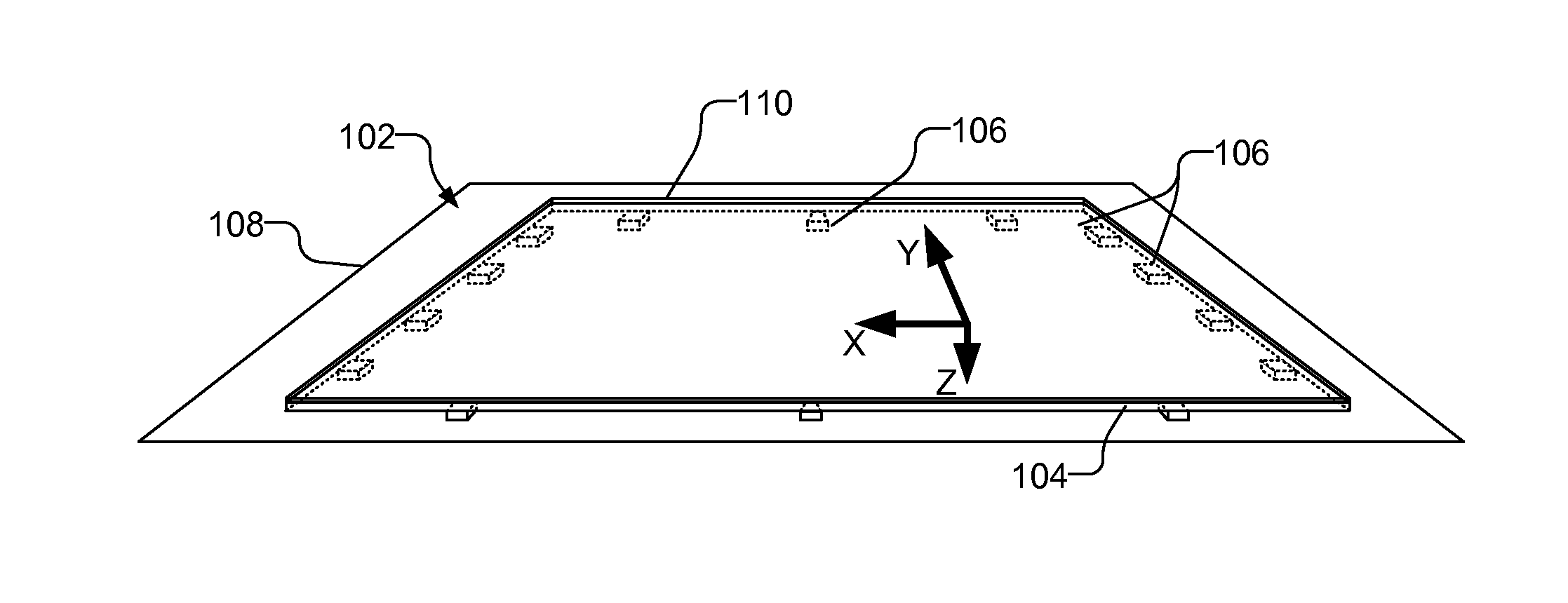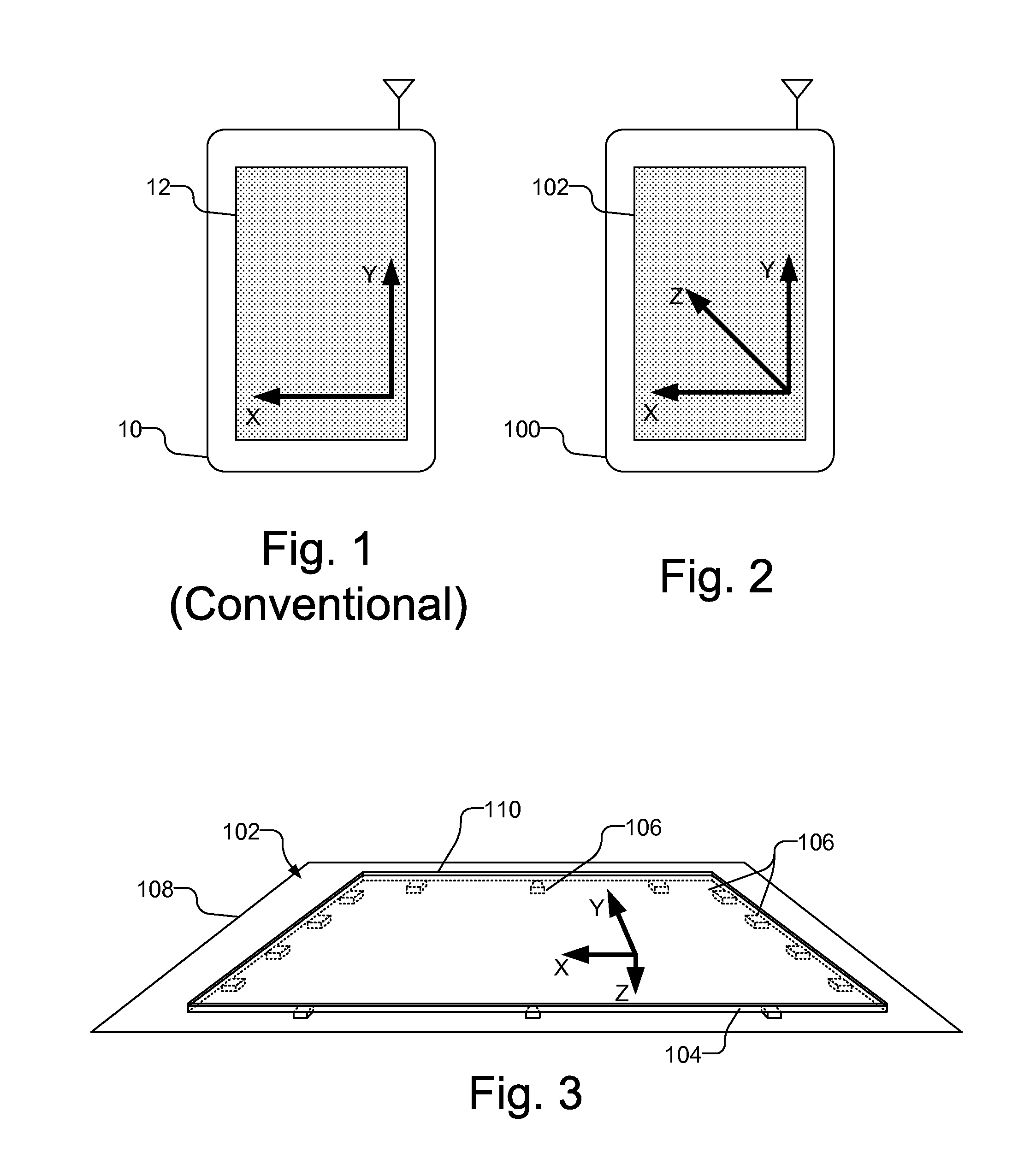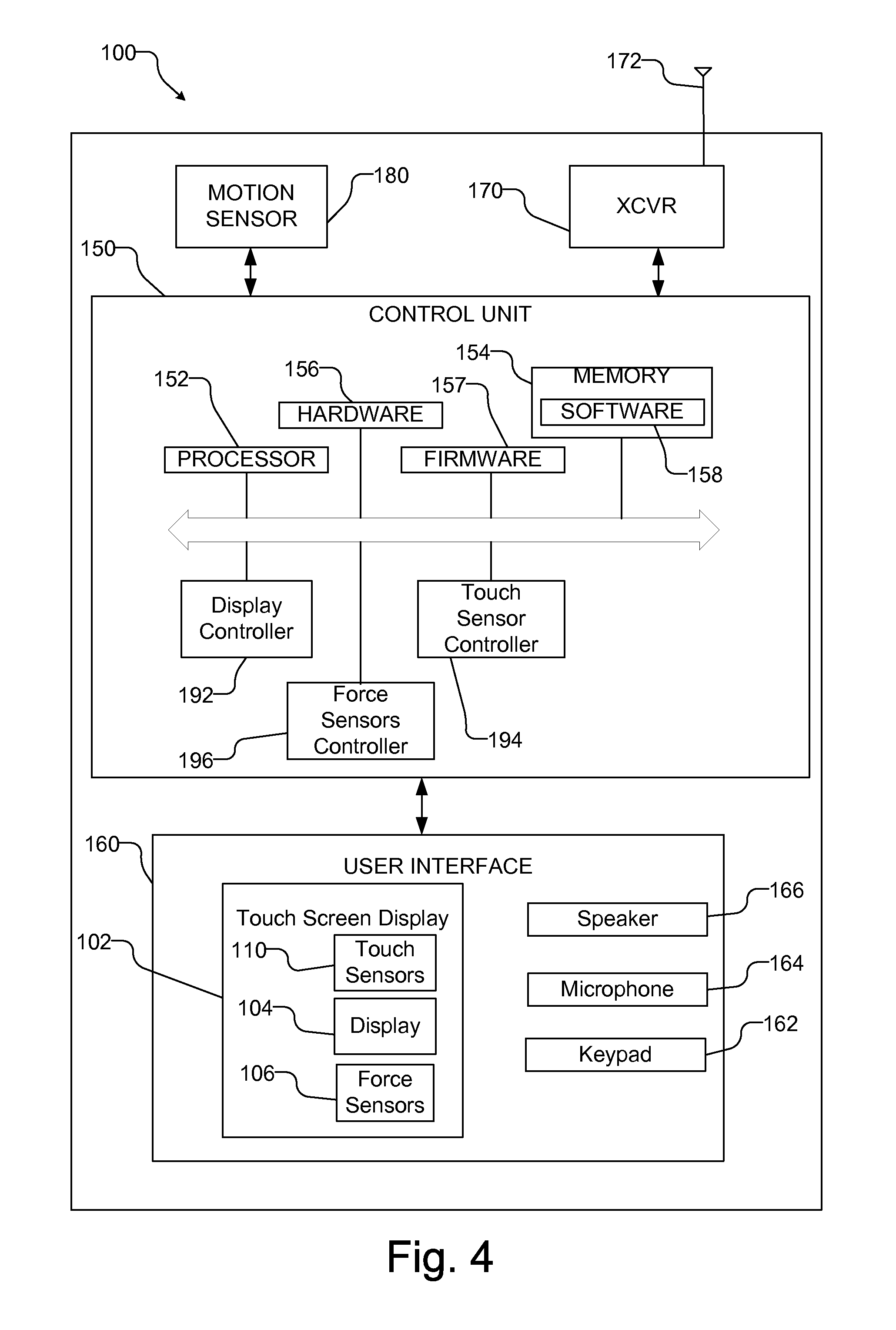Force sensing touch screen
a touch screen and force technology, applied in the field of force sensing touch screen, can solve the problems of limiting the user's interfacing opportunities and the device's response thereto
- Summary
- Abstract
- Description
- Claims
- Application Information
AI Technical Summary
Benefits of technology
Problems solved by technology
Method used
Image
Examples
Embodiment Construction
[0028]FIG. 2 illustrates a computing device 100 with a touch screen display 102 that detects touch information in three-dimensions, i.e., along the X-axis, the Y-axis, and the Z-axis. With the addition of Z-axis information, the touch screen display 102 permits three-dimensional gestures or interfacing and is not limited to simple two-dimensional gestures on the surface of the touch screen.
[0029]The computing device 100 may be a mobile platform, such as a cellular or other wireless communication device, personal communication system (PCS) device, personal navigation device (PND), Personal Information Manager (PIM), Personal Digital Assistant (PDA), laptop or other suitable mobile device or any other suitable stationary computing device, including a desk top computer or other similar device. “Computing device” is, thus, intended to include all devices, including wireless communication devices, computers, laptops, etc. with a user interface that includes a touch screen display.
[0030]F...
PUM
 Login to View More
Login to View More Abstract
Description
Claims
Application Information
 Login to View More
Login to View More - R&D
- Intellectual Property
- Life Sciences
- Materials
- Tech Scout
- Unparalleled Data Quality
- Higher Quality Content
- 60% Fewer Hallucinations
Browse by: Latest US Patents, China's latest patents, Technical Efficacy Thesaurus, Application Domain, Technology Topic, Popular Technical Reports.
© 2025 PatSnap. All rights reserved.Legal|Privacy policy|Modern Slavery Act Transparency Statement|Sitemap|About US| Contact US: help@patsnap.com



